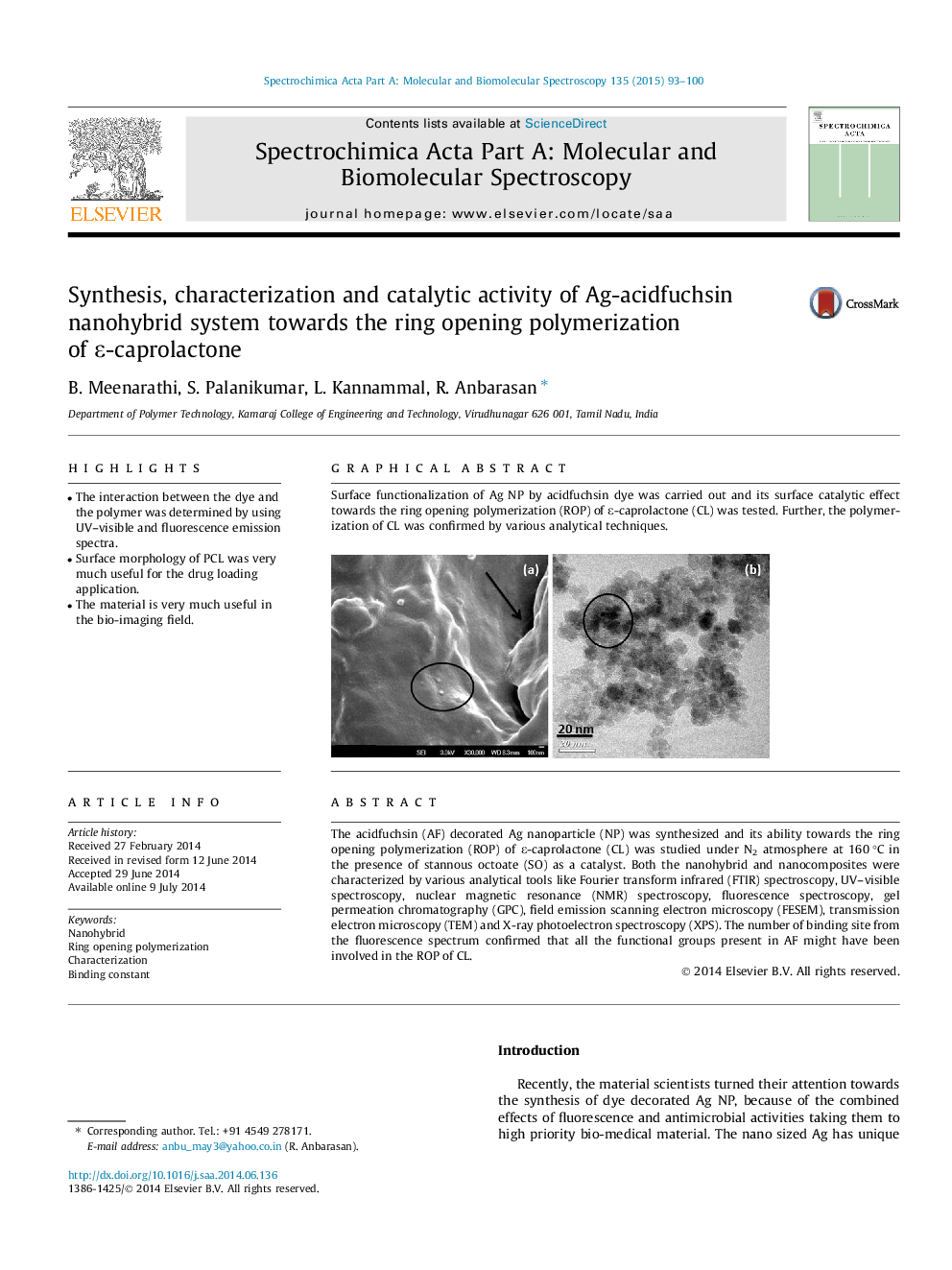| Article ID | Journal | Published Year | Pages | File Type |
|---|---|---|---|---|
| 1233168 | Spectrochimica Acta Part A: Molecular and Biomolecular Spectroscopy | 2015 | 8 Pages |
•The interaction between the dye and the polymer was determined by using UV–visible and fluorescence emission spectra.•Surface morphology of PCL was very much useful for the drug loading application.•The material is very much useful in the bio-imaging field.
The acidfuchsin (AF) decorated Ag nanoparticle (NP) was synthesized and its ability towards the ring opening polymerization (ROP) of ε-caprolactone (CL) was studied under N2 atmosphere at 160 °C in the presence of stannous octoate (SO) as a catalyst. Both the nanohybrid and nanocomposites were characterized by various analytical tools like Fourier transform infrared (FTIR) spectroscopy, UV–visible spectroscopy, nuclear magnetic resonance (NMR) spectroscopy, fluorescence spectroscopy, gel permeation chromatography (GPC), field emission scanning electron microscopy (FESEM), transmission electron microscopy (TEM) and X-ray photoelectron spectroscopy (XPS). The number of binding site from the fluorescence spectrum confirmed that all the functional groups present in AF might have been involved in the ROP of CL.
Graphical abstractSurface functionalization of Ag NP by acidfuchsin dye was carried out and its surface catalytic effect towards the ring opening polymerization (ROP) of ε-caprolactone (CL) was tested. Further, the polymerization of CL was confirmed by various analytical techniques.Figure optionsDownload full-size imageDownload as PowerPoint slide
